Excerpts from Jim Conrad's
Naturalist Newsletter
Entry issued on October 8, 2019, from the forest just west of Tepakán; elev. ~9m (~30 ft), N21.053°, W89.052°; north-central Yucatán state, MÉXICO
MEXICAN SUNFLOWER
When I returned to the rancho after the trip to Guatemala, the stone hut was surrounded by a profusion of the prodigiously flowering, 8-ft-tall (2.5m) sunflower-like plants shown below.
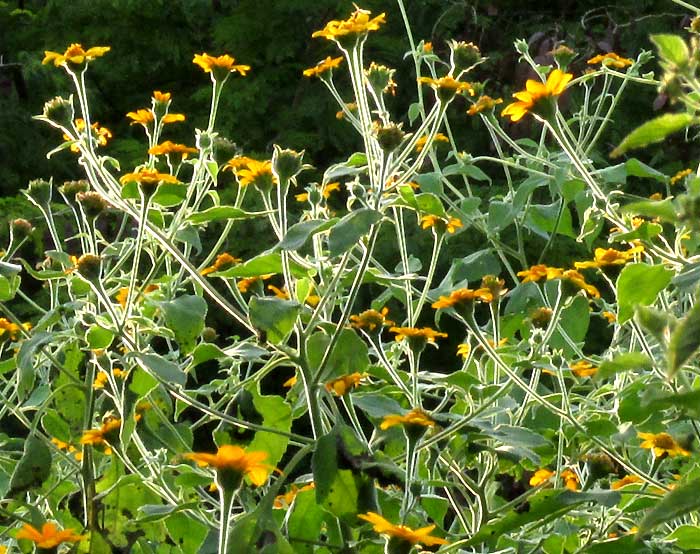
The silvery stem outlines is caused by hairs relaying sunlight coming from behind in late afternoon. The flowers attract large numbers of bees and butterflies, as shown below:

In that picture an important field mark for identification is the flowering head's upward-expanding ("fistulose") stem, or peduncle, below it. You can see that better in the next picture:
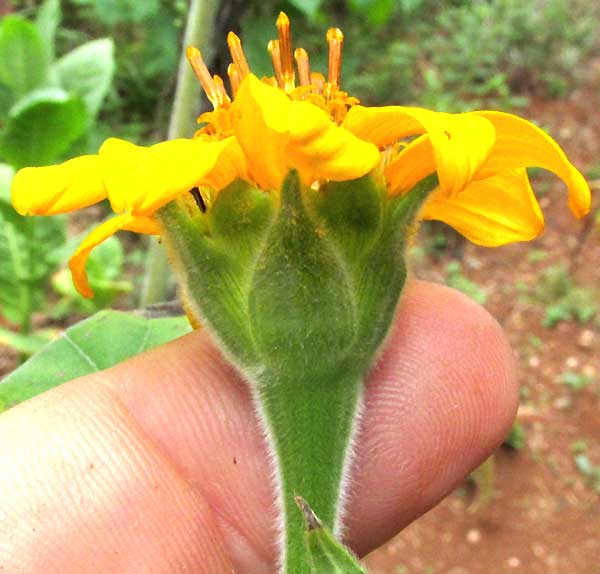
Also to note is that the hairy bracts are sharp-pointed, not rounded, as with a similar species also found here. A more mature head with most corollas withered and fallen away, when broken open shows what's seen below:
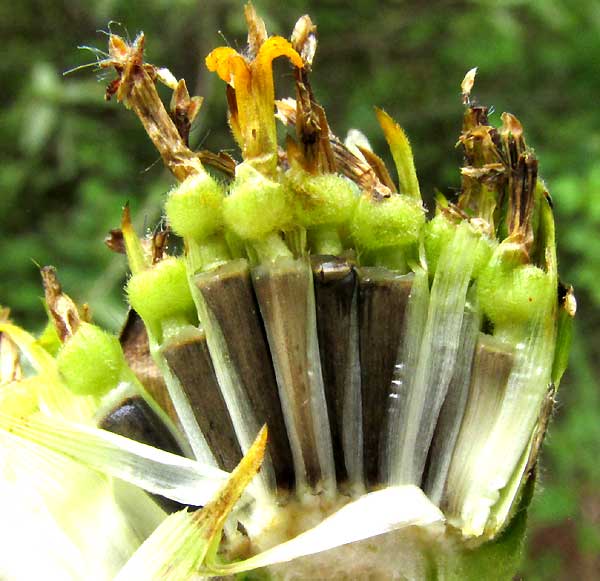
Leaves have long petioles and can be deeply three-parted, or oval, as shown below:
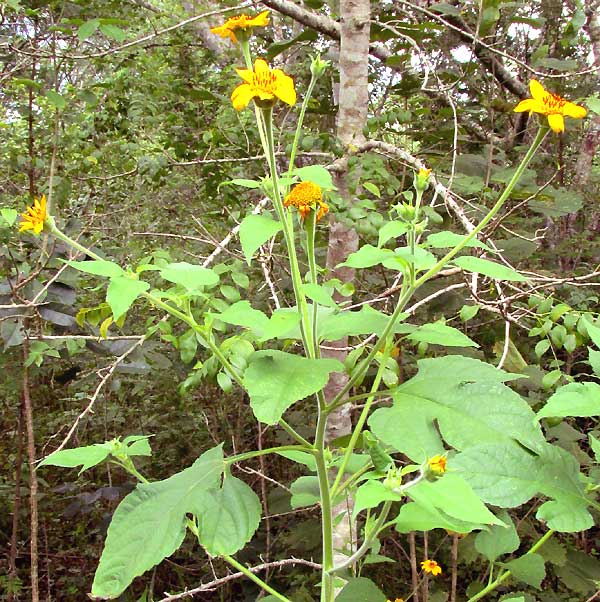
Locally this plant is called Acahual, which is a name used for numerous species throughout Mexico. In English sometimes it's called Mexican Sunflower, though that name also is used for other species. It's TITHONIA ROTUNDIFOLIA, native from the southern US south through Mexico and Central America, plus it's become invasive in numerous tropical and subtropical countries worldwide. It likes disturbed environments. Though it's considered to be an annual, its stem bases are almost woody. This year leaves on plants around the hut have been much eaten by caterpillars, especially those of the Bordered Patch butterfly, Chlosyne lacinia. At this writing about ¾ of many plants' lower leaves are hanging shriveled and black along the stems.
Entry issued on November 15, 2019, from the forest just west of Tepakán; elev. ~9m (~30 ft), N21.053°, W89.052°; north-central Yucatán state, MÉXICO
PAINTED BUNTINGS FEEDING ON MEXICAN SUNFLOWERS
From various perspectives we've admired the yellow-flowering Mexican Sunflowers around the stone hut. Nowadays those 8-ft-tall wildflowers have passed from flowering to fruiting, and as such are black, shriveled up, and sad looking. I might have knocked them down were it not for numerous small, seed-eating birds who feed on their mature, cypsela-type fruits. Below you see a pair of Painted Buntings doing just that, female on the left, male on the right.
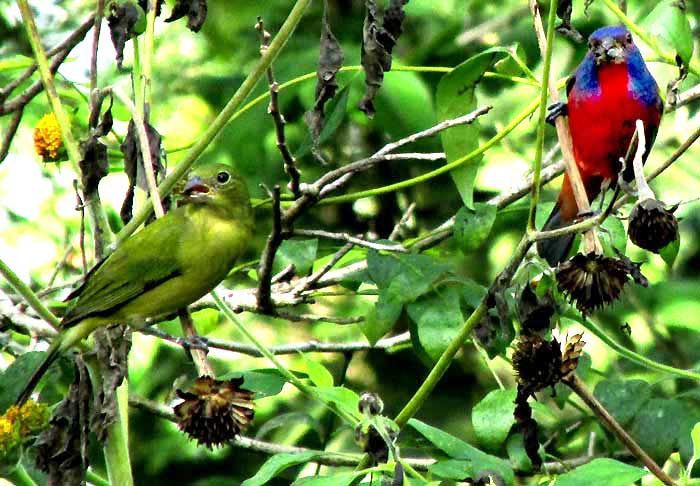
That pair has come several days in a row to a specific Mexican Sunflower just outside my backdoor, gnawing on its sunflower seeds while watching me inside the hut. They're almost like little kids enjoying the fright I give with unexpected movements.